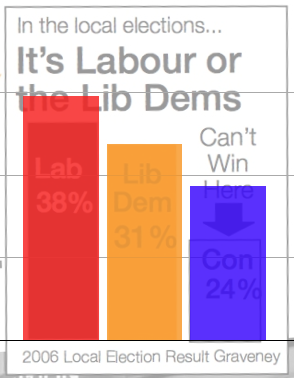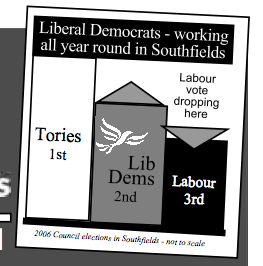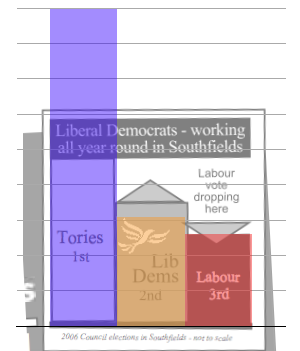I’m definitely one of those Conservatives for whom the coalition has been a real eye-opener. I wasn’t keen when the talks were taking place, especially when it seemed that the Lib Dems were playing the two sides off against each other by holding talks with Labour. And the political animal in me just didn’t like the idea of power sharing. I hadn’t been tramping the streets for months on end to elect anything but a Conservative government.
But as time has passed I’ve become a real fan.
Part of it is because of my basic approach to politics. I’m not interested in power for power’s sake. It isn’t what motivates me, instead I’m there because I believe in some basic principles (low tax, freedom of the individual, a small state) and because I believe I can help by being part of the change towards that, but not because I have a particular desire for power.
It’s possibly principles that makes me such a coalition fan; it has to be based on principles, they are what bind the two partners together, as well as highlighting their differences so they maintain their individual characters. It is such a contrast from the Labour, for whom it seemed that gaining and retaining power was the emphasis of Blair and Brown.
And then we get things like Your Freedom. It will be years before we know how much government policy is being driven by the Conservatives and how much is being driven by the Liberal Democrats, but I can’t help but think that a lot of the civil liberty agenda is coming from the Lib Dems. And, if that’s true, thank God for them.
There is part of me that thinks it doesn’t go far enough. It’s all very well asking what legislation or regulations should be repealed, for example, I’ve never understood why we don’t make more use of sunset laws – so legislation has a defined life unless expressly extended (and, by implication, has a justification for that extension). However, it is a refreshing start and not just a civil liberty issue, but also an example of the big society, allowing people to play a part in the government.
I still can’t help but think it’s an incredibly exciting time for government and the country. There are huge challenges as a result of years of Labour mismanagement, but they will force us to focus on what’s really important for the nation and the area, but will also mean there are opportunities for people to directly be involved in the running of services.
I know that there will be groups who take responsibility for schools or services that I don’t like or agree with; that is an inevitable consequence of devolving powers to people. But even with that, it makes for a healthier and better society when people, not politicians, are the ones holding the power.
And extending that approach to government, perhaps it’s healthier when power has to be shared between two coalition partners than when it is held by a single party. I’m still a Conservative (and would probably still prefer a single party government) but I’m worrying I’m detecting distinct liberal tendencies in my advancing years.
 With only four days of the election campaign behind us (
With only four days of the election campaign behind us ( I was also alerted to
I was also alerted to  I’m a lover of Lib Dem campaign leaflets. For years they have had a few consistent themes.
I’m a lover of Lib Dem campaign leaflets. For years they have had a few consistent themes. I actually did wonder what a to scale graph would look like, so made one, based on the average votes per party in 2006, which were Conservative 2,241, Liberal Democrat 773 and Labour 650. The Lib Dems weren’t that far out, they got the order right, at least.
I actually did wonder what a to scale graph would look like, so made one, based on the average votes per party in 2006, which were Conservative 2,241, Liberal Democrat 773 and Labour 650. The Lib Dems weren’t that far out, they got the order right, at least.